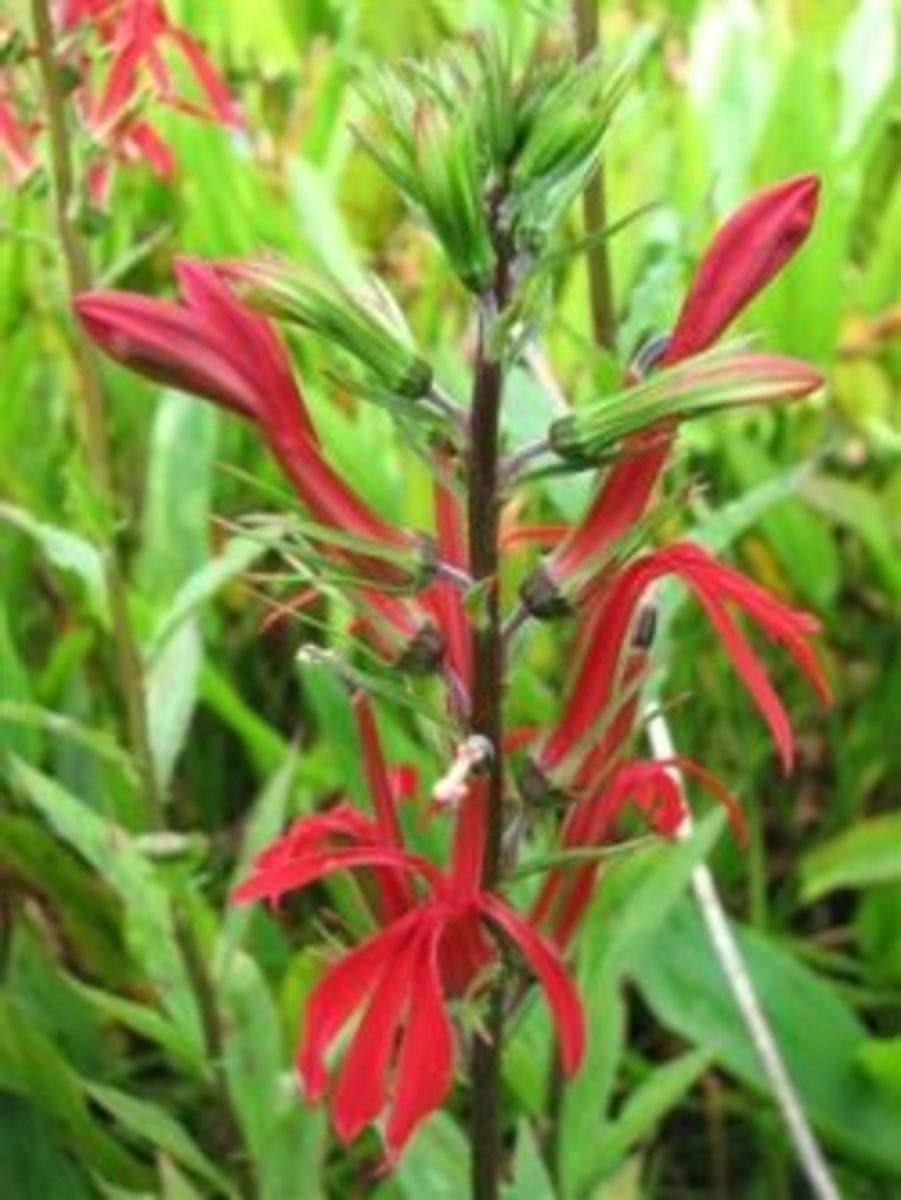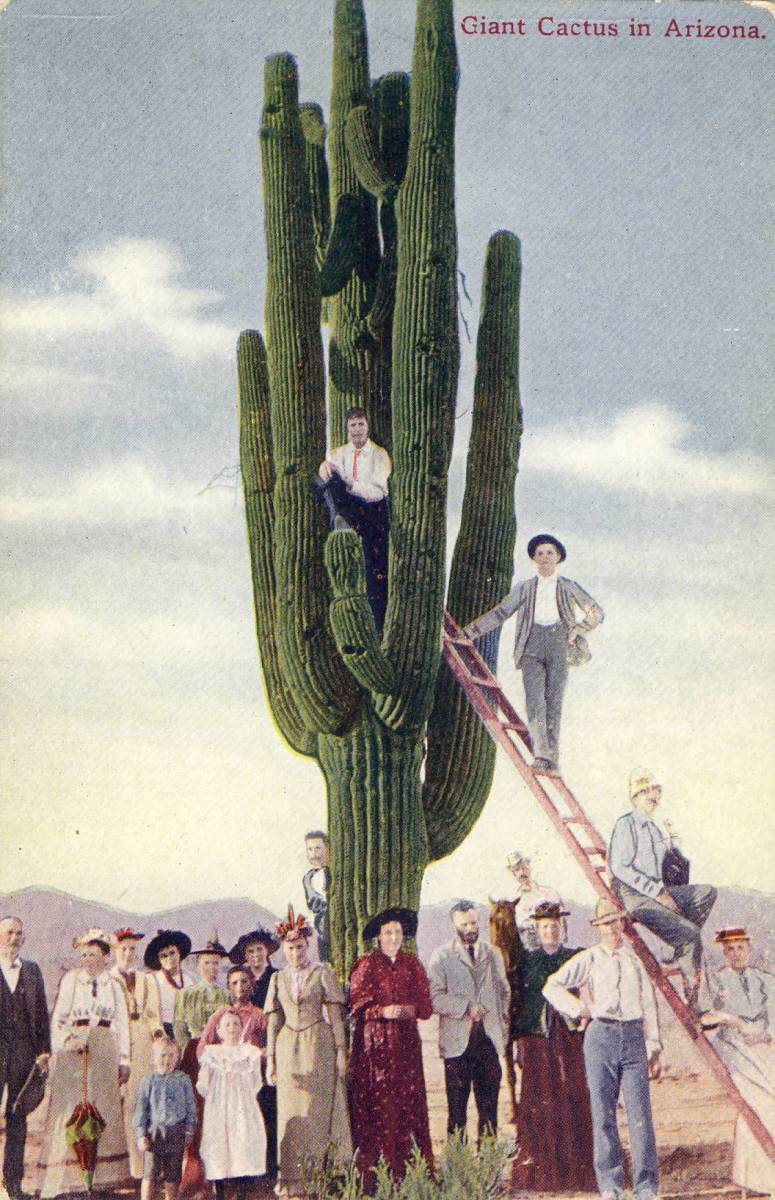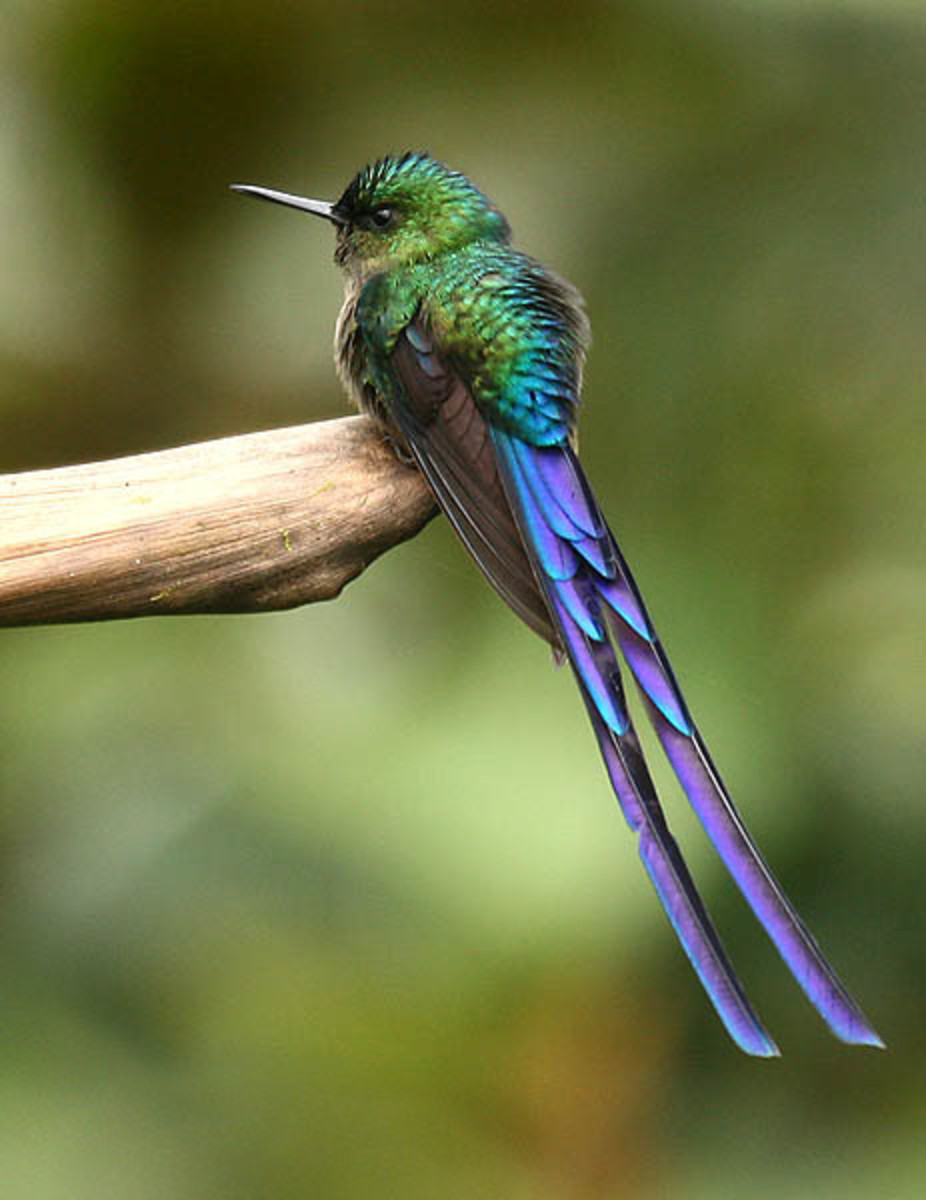My Nature and Scenic Articles - A Guide
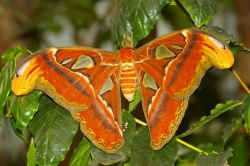
What you will find among my articles
I have pursued the activity of photography for over ten years, concentrating on nature photography. I have traveled throughout Arizona and into southern Utah. I photograph the desert and the mountains, the plants and wildflowers, birds, butterflies, animals, dragonflies, and other kinds of bugs. I visit exhibits of tropical butterflies and birds.
This article will present a short introduction to each of my nature and scenic articles, and give a link to each.
The photo on the left is an Atlas Moth, Attacus atlas. It is discussed in my article on Tropical Butterflies.
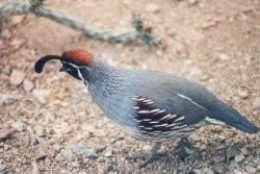
The birds of southern Arizona
This is my most popular article. It has earned the Purple Star and Lens of the Day. In this article, I present photographs of many birds I have photographed in the wild as a bird photographer. It includes some common birds and some seriously rare birds, including one believed to be extinct, as well as unusual bird colorings, and information about how I captured many of the photos. I present just a few of the photos from that article here. These birds are all from southeastern Arizona, which boasts records of more than half the birds that appear in the entire United States.
The photo on the right is a Gambel's Quail, Callipepla gambelii. These birds are common in southern Arizona, but they remain one of my favorite. They live here most of the year. Parents mate for the duration and raise the young together. You will often see both parents together with up to 24 youngsters, running across the road or in the desert.
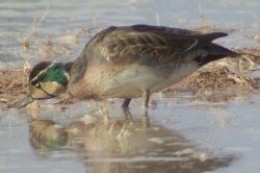
Baikal Teal
Anas formosa
A serious rarity in the United States. There are records of this bird in only three states, and Arizona is the most recently added state. This male bird stayed at Gilbert Water Ranch, west of Phoenix, for about two weeks a couple of years ago in December. Normally, these birds breed in Siberia, and winter in Viet Nam and neighboring countries. Appearances in the United States have been so rare many American birders thought it was extinct.
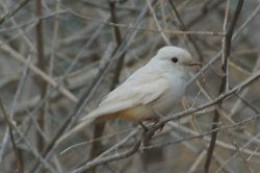
Leucistic Vermilion Flycatcher
Pyrocephalus rubinus
A leucistic bird is a bird that has mostly white feathers, but the bird is not quite an albino. Sometimes they have coloring in their eyes, and sometimes they have a few feathers that are not white.
Normally, females have brownish wings, tail and back, and have brown on the top and sides of the head as well. They have an orange area on the underside near the tail. This bird has normally colored eyes, but the only other hint of color is a lighter orange, almost yellow, next to the tail.
Males are a brilliant red with brown wings, back, and tail, and a brown streak from the eye back to the back of the head. Both genders tend to have very dark tails.
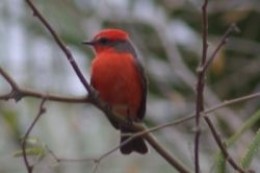
This bird's mate was a normally colored male.
Leucistic birds probably don't tend to survive very long, because they are more visible to predators.
I have several other leucistic birds in my article.

Elegant Trogon
Trogon elegans
The Elegant Trogon is one bird every birder wants to see. They live predominantly in Mexico and parts south, but have been spending time in southern Arizona in recent years. Finding one to photograph isn't easy. They are far more often heard than seen. In my article, I tell the story of how I got this bird. I had to hike uphill for nearly a mile to get to the place where I found him.
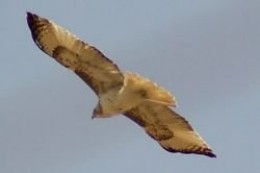
Red-tailed Hawk
Buteo jamaicensis
Capturing birds in flight is yet another skill, not at all easy. Given the equipment I can afford, I hand-hold the lens, and hand-focus and hand-expose all birds in flight.
I finish the article with information about birds from other parts of the world, including videos of the wohderful Lyrebird, the best mimic in the world.
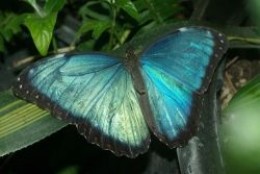
Tropical Butterflies
My second most popular article has photographs of butterflies from various tropical areas around the world. It has won Purple Star. Most of these photos were taken at a butterfly exhibit maintained by Tucson Botanical Gardens from October through April. Various butterfly exhibits around the world help people to appreciate the beautiful butterflies of the tropics, and to support efforts to protect them. Many of the people who present the exhibits are also involved in conservation efforts.
The article includes information about how to capture good photos of butterflies.
The Blue Morpho, Morpho peleides, right, is my favorite tropical butterfly. It is widely known and recognized, as well as appreciated. They are difficult to photograph because when they are at rest, they almost always keep their wings closed. The color is not a pigment. It is caused by the refraction of sunlight on the fine structures of the surfaces of the wings.
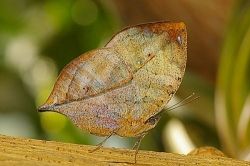
Indian Dead Leaf
Kallima paralekta
Butterflies often look very different, depending on whether you are looking at the upper side of their wings, or the underside. How they can have such a totally different appearance with such thin and delicate wings, is a source of wonder to me. The photo on the right is the underside of this butterfly.
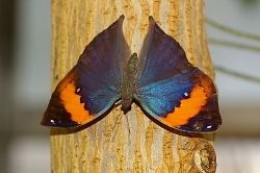
And here is the upper side.
Most of the photographs in this article are large and easy to view. As time permits, I am updating older articles with larger photographs.
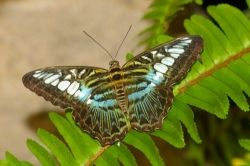
Blue Clipper
Parthenos sylvia lilacinus
This is another example of a very colorful butterfly from Asia.

Awesome Arizona Sunsets and Sunrises
In this article, the focus is on sunrises and sunsets in southern Arizona. Sunsets are often a very popular subject of interest for many people. I have well over 10,000 photos of sunsets, and I present a few here, together with some tips for taking good sunset and sunrise photos.
The title of this sunset is "The Heavens Declare the Glory" of God. It was taken with a cheap point and shoot digital camera. I always carried one with me, for occasions such as this one. The entire sky was aflame with color.
Nowadays, I carry a good camera with me, but as you can see, you don't need fancy equipment for good photos of sky fire.
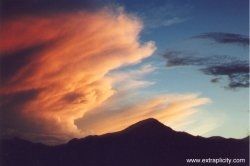
Clouds and Atmosphere
In this article, I talk about different kinds of clouds, and what kinds of clouds and conditions make the best sunset photos. I rarely see colorful thunderheads like the ones in this photo. Most of the best photos are made from cirrus clouds.
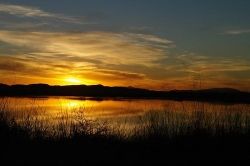
Water
If you can find a good lake, use it to your advantage. If not, find a puddle. Lakes aren't that common in Arizona. And oceans are nonexistent. We have plenty of beach, though.
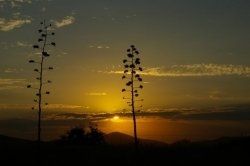
Foregrounds
Sometimes the sky itself isn't that spectacular. In that case, what is in the foreground can become important. Trees are another good foreground, as are cactus.
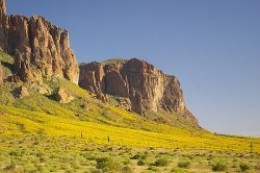
Flowerscapes
Flowerscapes are landscapes with carpets of spring flowers. I have devoted a landscape article JUST to spring flowerscapes. Most of my photos are from southern Arizona, but a few are from northern Arizona, where often "spring" occurs in August, at least as far as the flowers are concerned. It is too cold in spring. Flowers are also more common in the mountains in August. The abundance of flowers depends completely on the scarce rains of Arizona. In my area, we get about 11 inches of rain a year. Mountains get a bit more. We have two rainy seasons. Winter is the one that yields the spring flowers, and there must be around 4 to 5 inches of rain, minimum, to produce a carpet of wildflowers. Wildflowers come mostly from annual plants, though some are perennials. The annuals grow very quickly, and don't last very long. The August flowers grow as a result of monsoon rains that occur during our season of Wet Summer (one of five seasons in Arizona). Again, there must be several inches to yield nice flowers.
The scene on the right was found in the Superstition Mountains west of Phoenix, specifically in the Lost Dutchman State Park. The flowers are brittlebush, a perennial.

Chuparosa and Brittlebush
Found near Bartlett Lake, northeast of Phoenix.
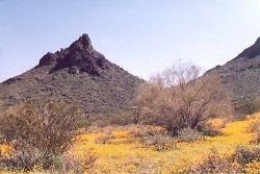
California Poppies
Picacho Peak is the location of some pretty spectacular displays in some years. For history buffs, this was the location of the westernmost battle of the Civil War. The peak in this photo is a smaller peak next to Picacho Peak. Stands of California Poppies are found in a number of different locations in southern Arizona.
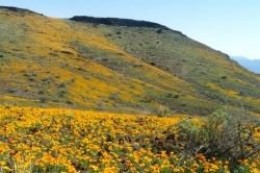
California Poppies on Peridot Mesa
This is within the lands of the Apache Nation, east of Globe, Arizona. This is a truly spectacular display in good years. While there are poppies elsewhere, most of them seem to gather here.
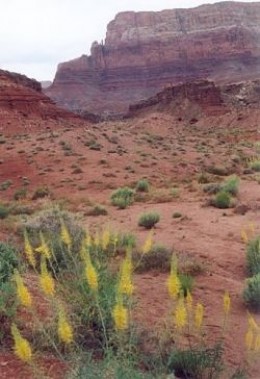
Princes Plume
You won't find carpets of Princes Plume in Glen Canyon, but you can find some nice stands that make wonderful photographs. This location is just north of Lee's Ferry in the Vermilion Cliffs area. The Colorado River runs through the canyon.
Two Choice Question
When you go out into nature, which do you prefer to see?
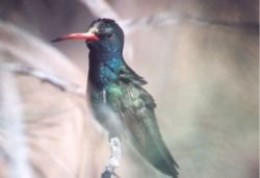
Arizona Hummingbirds
There are sixteen species of hummingbirds that are recorded for Arizona. One of them has only appeared one season, as far as I know. I have photographed the other fifteen.
This article consists of photos of these species plus a little information about each.
The Broad-billed Hummingbird, right, is common and widespread. It is my favorite because it is so colorful.
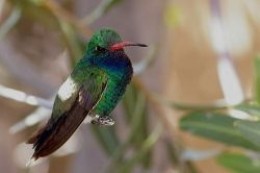
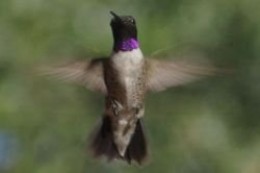
Black-chinned Hummingbird
In flight. The purple color is refraction of sunlight. The feathers are black, and the fine structure on the feathers produces the color only when the sun is shining at just the right angle, on the feathers.
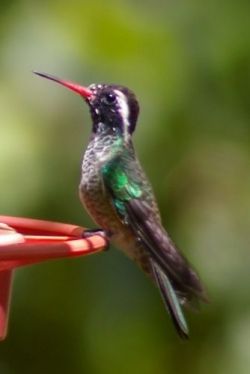
White-eared Hummingbird
This species is relatively rare. I only know of one location that has them reliably in summer, and that is a particular guest ranch in the Huachuca Mountains. Our hummingbirds are summer visitors that come from the south; they are basically tropical birds. There are a few species that are more common for a longer period of time.
I have a few images of mothers feeding babies and of babies as well.
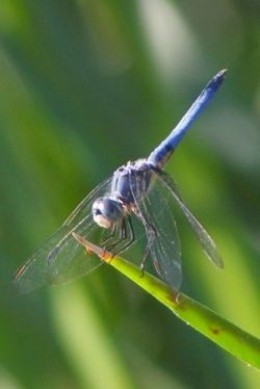
Arizona Dragonflies
Arizona supports a surprising number of species of dragonflies. People tend to think that Arizona doesn't have much water, but there are riparian areas, some natural and some artificial, that have dragonflies. I find most of my dragonflies either at Sweetwater Wetlands (an artificial park that helps process Tucson wastewater) and Patagonia Lake (a natural lake in southern Arizona). I also include photos of some damselflies.
The photo is of a Blue Dasher.
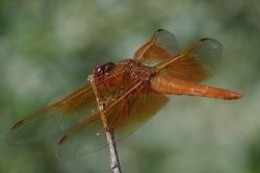
Flame Skimmer
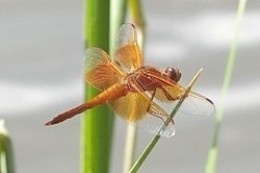
The photos in the Dragonfly article are considerably larger and more detailed than the ones I am showing you here.
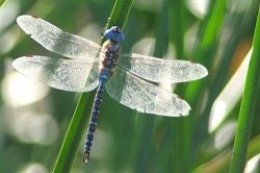
Blue-eyed Darner
These dragonflies are much harder to photograph because they spend most of their time flying. It is rare to find one sitting anywhere long enough to take a picture.
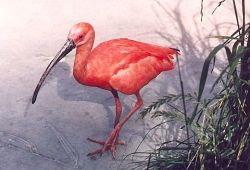
Tropical Birds
Not having the money for travel to far-away places, I have captured some wildlife in the local zoo. I appreciate zoos because they help preserve some rather fragile and endangered species through breeding programs, and they help people learn to appreciate these species and to want to preserve them. We owe a great debt to some of our zoos for the work they have done. Some of the species I have been able to photograph are either endangered, or rarely seen in zoos.
This is a Scarlet Ibis. It is a more commonly observed species.
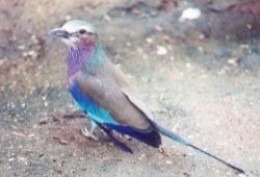
Lilac-breasted Roller
I have photographs of birds from all the major tropical areas of the world.
This is one of my favorites because I love his colors.
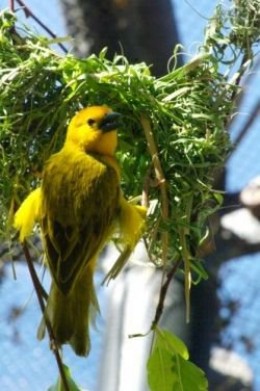
Taveta Golden Weaver
This bird is fascinating to watch. The male makes an elaborate nest using weaving techniques. The female decides if the nest is acceptable, and if it is, they will mate. If not, he has to start over.
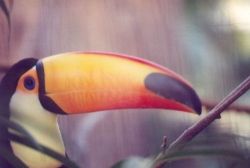
Toco Toucan
The Toucan's bill is very light, and helps to keep his body cool.

Red-capped Cardinal
Although not all tropical birds are colorful, many are. This is a good example of the latter.

Scenery in Utah
I have had the opportunity to shoot scenery across the southern part of Utah. This article concentrates on what I have been able to capture.
The waterfall is in Zion National Park.
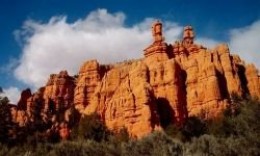
Red Rock Canyon
This canyon is not so well known. It is along the road to Bryce Canyon, traveling from Zion. I didn't get to spend much time there, and hope to go back.
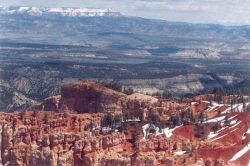
Bryce Canyon
It was a bright, clear, sunny day when you could see mountains that were miles away. And bitterly cold. There was snow on the ground. The elevation there is just under 9000 feet. It is a challenge to walk any distance at that altitude in the cold when you're not used to it.
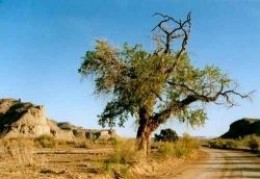
Grand Staircase - Escalante
I went to see Grosvenor Arch. The scenery along the way was wonderful. This is a relatively new national park. I have always been drawn to lone trees. This one was along the route.
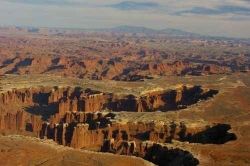
Canyonlands
Canyonlands is a huge park, with two major roads going into it. I was able to travel them both, though I hoped to locate a famous horseshoe type bend in the river, which I didn't get to see. Instead, I found this scene, which reminds me of the claw print of a giant animal.
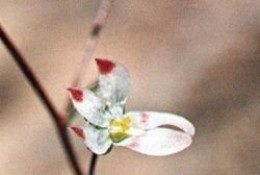
Bellyflowers
Bellyflowers are flowers that are so tiny and close to the ground that you have to get on your belly to see them!
This is the Threadplant. The flower is no larger than 1/4 inch, and the tiny plant on which it grows is spread out, and not more than an inch or two high. I have actually been able to taste the nectar, which is quite good. Most likely, this plant is pollinated by ants.

Foothill Deervetch
You can tell by looking at this photo that this is a tiny and inconspicuous plant. I almost didn't even notice it, and I haven't seen it since!
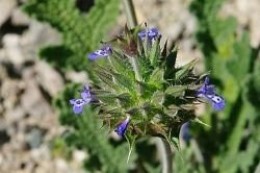
Chia
This is the plant from which chia seeds are harvested. They are among the most nutritious in the world, and only a few of them can actually make a fairly reasonable meal if you are out in the wilderness. The Chia Pet also uses this plant. The plant itself puts up a flower stalk about a foot in the air, but as you can see, the flowers are quite tiny, and around here at least, they only bloom a few at a time. The seeds are likewise quite small.
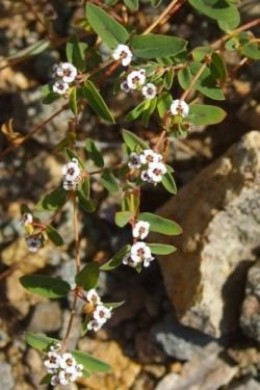
Sand Spurge
This is a Euphorbia that grows along the ground. The flowers are about 1/3 of an inch in diameter. If you crush this plant, it will yield a milky juice. Apply it to an ant bite, and it will take the sting right out.
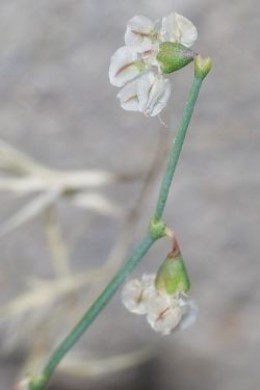
Buckwheat
This is a spindly plant that grows a few inches high. The flowers are, maybe, 1/8 of an inch.
Poll Question
What is your favorite kind of wildlife?
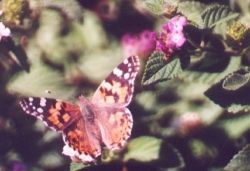
Arizona Butterflies and Moths
Arizona sports a surprising number of different species of butterflies and moths. I keep running across new ones when I am out looking for something else. They are also attracted to butterfly gardens, and I know where there are a couple of such gardens.
This is a Painted Lady. These are fairly common, and I see them often. I got this photo at the Arizona-Sonora Desert Museum. They maintain a good butterfly garden.
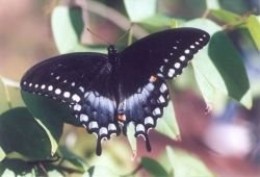
Spicebush Swallowtail
This species is extremely active and hard to photograph, because it just won't sit still! These are also common.
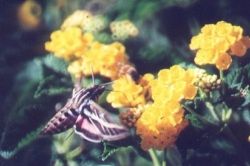
White-lined Sphyx Moth
These are mostly out at night, and mainly pollinate things like the Evening Primrose, which blooms from late afternoon to early morning. But I have been lucky to catch a few in the daytime, and also at night for that matter. This is one of a type of moth known as a Hummingbird Moth, so-called because they fly like hummingbirds, hover to eat, and are often taken for hummingbirds.
I got this one at the Desert Museum as well. It is feeding on Lantana camara.
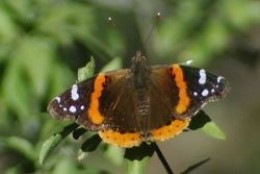
Red Admiral
I have only seen this species once. I was birding, and not having much luck at photographing the bird I was looking for. This took me completely by surprise. There was quite a small crowd of people looking at it.
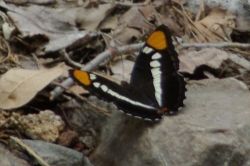
Arizona Sister
One time when I went on a long hike trying to find an Elegant Trogon, I didn't see the bird, but I did see this butterfly.
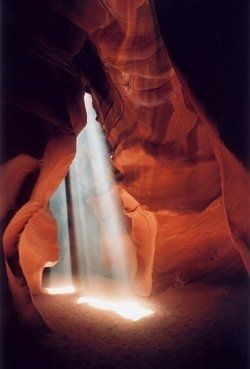
Antelope Canyon - Abstract Landscapes
Antelope Canyon is noted for its rays, which happen rarely. They can only be photographed during the summer, in the middle of the day. Since the monsoon occurs during the months of July and August, the prudent visitor will try to visit in June. This image has received many awards, and is one of the best in my collection. The view is right at the entrance to the upper canyon.
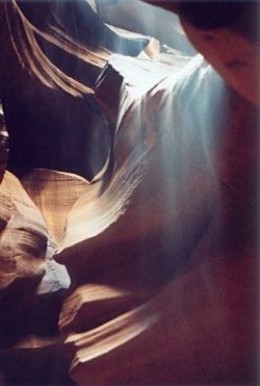
You've seen waterfalls. How about sand falls? It was windy, and sand was blowing off the ledge and falling to the ground below.
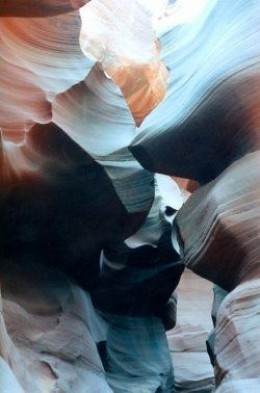
The many faces of Antelope Canyon change color as the day progresses. The faces are irregular shapes, and the possibilities for abstract views are endless.
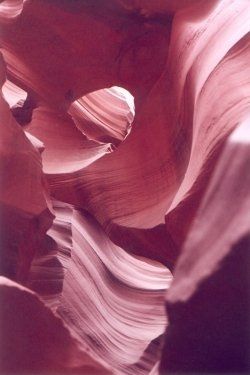
The Window
This is in Lower Antelope Canyon. It is the only hole that pierces any of the rock that I know about. The sandstone gets its major color from iron oxide. In other words, it's rusty!

Dineh Guitarist
Antelope Canyon is on Dineh land (Navajo). They manage the park. This is a young Dineh guide who brought his guitar into the canyon and graciously agree to play for me. He was quite good. I keep forgetting to bring my recorder. Guitars and wind instruments sound wonderful in the canyon!
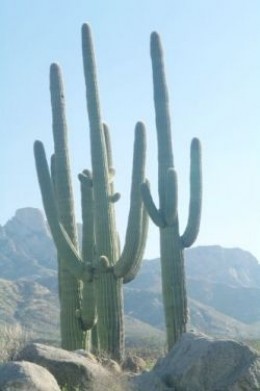
Edible Desert
If you know where to find it, there is plentiful food in the desert. A knowledgeable person can survive in the desert any time of the year. There are probably at least 450 edible desert plants. This article covers a few of them.
The tall cactus on the right is the Saguaro (Carnegiea gigantea). The fruit is edible and very delicious, and the birds almost always get it before I do! The Tohono O'odham have a ceremony in early July when they pick cactus fruit, using long poles to reach them. The fruit is used to make various kinds of food and drink. Saguaros are protected by law. You may not destroy them, and you have to get a permit to move them.
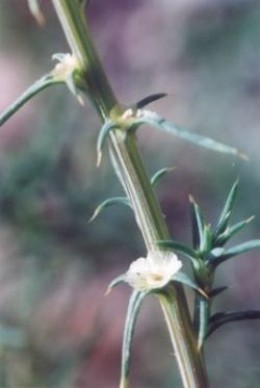
Tumbling Tumbleweed
Salsola sp.
Remember the song? I'll bet you never knew that young tumbleweed is edible! You can boil it a little, and the taste somewhat resembles spinach. It's delicious with butter.
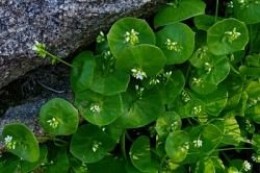
Miner's Lettuce
Claytonia perfoliata
An excellent salad plant, very invigorating. I eat a little whenever I am hiking and see it. It likes shady places, and I have only seen it in two locations.
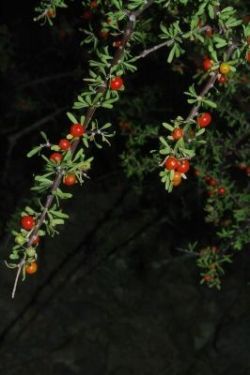
Wolfberry
Lycium berlandieri
The small red berries of several species are edible. These are medicinal, too. You eat them for the medicinal value as well as for the nice taste.
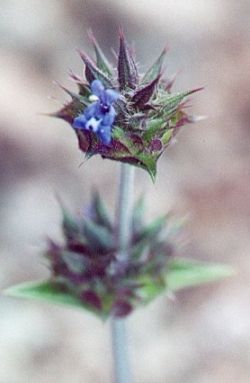
Chia
Salvia columbariae
The seeds used on Chia pets are actually one of the most nutritious seeds in the world! A small handful will satisfy the body for hours. Chia doesn't grow really abundantly in the desert, so the ones you buy on the market are from elsewhere. But if you know what they look like, you might get a meal or two locally.
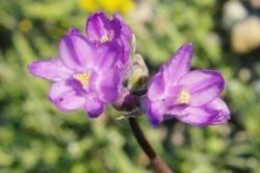
Bluedicks
Dichelostemma capitatum
These are wild onions, and can be used in cooking in the same way.
Still to Come...
I have more articles planned, for wildlife and scenery. I will do several on the scenery of Arizona because there is so much to show you. I will have more on flowers. I also plan to do one on lizards, and one on mammals. Stay tuned!

